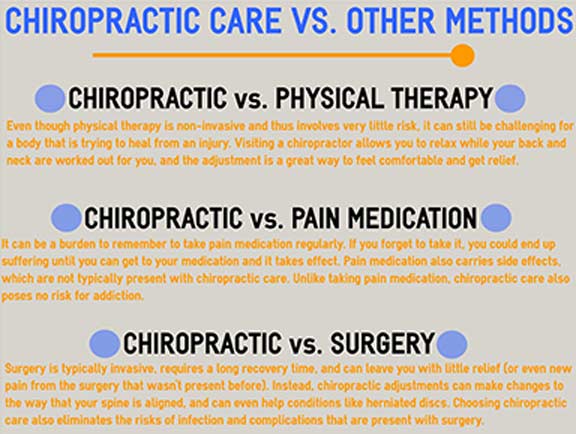A Beginner'S Guide To Comprehending Different Sorts Of Pain In The Back: Reasons And Treatments
A Beginner'S Guide To Comprehending Different Sorts Of Pain In The Back: Reasons And Treatments
Blog Article
Content By-Ohlsen Almeida
If you've ever before experienced pain in the back, you understand how debilitating it can be. From plain pains to sharp, shooting pains, understanding the root cause is essential for finding relief. Whether it's an outcome of poor position, injury, or a clinical condition, identifying the particular kind of pain in the back you're taking care of is the initial step in the direction of efficient therapy. So, what are the different types of pain in the back, and how can you determine the reason to minimize your discomfort?
Common Kind Of Pain In The Back
When it comes to pain in the back, there are a number of usual types that people might experience. One widespread kind is muscular tissue pressure, often caused by lifting hefty things or abrupt movements that stress the muscle mass and ligaments in the back. This kind of discomfort can range from light discomfort to severe, acute pain depending on the level of the stress.
One more common type is herniated discs, which happen when the soft cells in between the vertebrae bulges out and taxes the surrounding nerves. This can cause pain, pins and needles, or tingling experiences in the back or legs.
Furthermore, sciatic nerve pain is a kind of neck and back pain that comes from the lower back and emits down one or both legs as a result of compression or irritation of the sciatic nerve.
Degenerative disc disease is another type where the discs in the spine weaken over time, creating discomfort, tightness, and reduced flexibility. Understanding https://www.washingtonpost.com/national/health-science/how-safe-are-the-vigorous-neck-manipulations-done-by-chiropractors/2014/01/06/26870726-5cf7-11e3-bc56-c6ca94801fac_story.html of pain in the back can assist you determine and address the origin of your discomfort efficiently.
Root Causes Of Pain In The Back
To comprehend the root causes of pain in the back, it's essential to take into consideration numerous aspects that can contribute to this common concern. Among the most prevalent causes is muscular tissue or tendon strain because of sudden movements, raising hefty things improperly, or bad pose. Conditions such as joint inflammation, weakening of bones, and herniated discs can likewise result in neck and back pain.
Injuries from mishaps or falls can lead to severe or persistent neck and back pain too. Obesity, lack of exercise, and inactive way of lives are significant contributors to pain in the back, as excess weight places strain on the spinal column. Poor functional designs at work or home, such as sitting for extended periods in awkward settings, can also create back pain.
Mental elements like stress and anxiety and stress and anxiety can show up physically as neck and back pain. Comprehending these diverse causes can aid recognize the root of your pain and guide you towards effective treatment options.
Therapy Choices for Neck And Back Pain
Addressing back pain successfully calls for a tailored technique that thinks about the details aspects adding to your pain. Therapy choices for neck and back pain differ depending on the cause and seriousness of your symptoms. In many cases, light to regulate neck and back pain can be managed with over the counter discomfort medications such as ibuprofen or acetaminophen.
Physical treatment and stretching exercises can aid enhance flexibility, reinforce muscles, and alleviate pain in the long term. For more extreme situations, a healthcare provider might suggest prescription medicines, shots, and even surgical procedure as a last resort.
https://chiropractic-specialist-n05049.webdesign96.com/32384964/comparing-chiropractic-care-adjustments-to-traditional-physical-treatment-which-is-right-for-you like acupuncture, chiropractic care, and massage therapy have also shown pledge in decreasing pain in the back for some individuals. Lifestyle changes such as preserving a healthy and balanced weight, exercising good stance, and remaining energetic can play a substantial role in protecting against and managing neck and back pain.
It's vital to work carefully with your doctor to determine the most reliable therapy plan for your specific problem.
Final thought
Since you have a better understanding of the usual kinds of neck and back pain, their reasons, and treatment choices, you can take proactive actions to manage and prevent pain. Bear in mind to pay attention to your body, seek clinical recommendations if required, and explore various treatment choices that work best for you. By staying educated and proactive, you can enhance your quality of life and minimize the effect of back pain on your everyday tasks.
